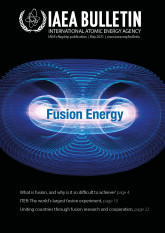The basic premise of private fusion development is that there are many paths to commercialization, and entrepreneurs can complement government programmes. We only have to look to the space launch industry to illustrate that point. A combination of clever public–private partnership programmes run by the US Government has led to cost savings across the board in space launch. SpaceX, Blue Origin and others have shown how this can be done.
Private ‘fusioneers’ think similarly, and ask: how can we make things less expensive? How can we use the latest innovations in materials, technology and artificial intelligence to reach viability? How can we reduce total capital costs and cost of electricity so that fusion systems can compete with combined cycle natural gas?
I’ve been following the story of private fusion enterprises very closely since my postdoc at Lawrence Livermore National Laboratory in 1999. The US Department of Energy ran a small programme called Innovative Confinement Concepts (ICC), which sought simpler and easier-to-engineer concepts for nuclear fusion. I helped to organize the ICC workshop series and there was a healthy overlap with fusion concepts being developed privately. Just down the road from Livermore, TAE Technologies, then called Tri-Alpha Energy, was setting up and getting going; up the road in Vancouver, Canada, General Fusion was starting up, and in the United Kingdom, Tokamak Energy, then called Tokamak Solutions, was being founded too.



